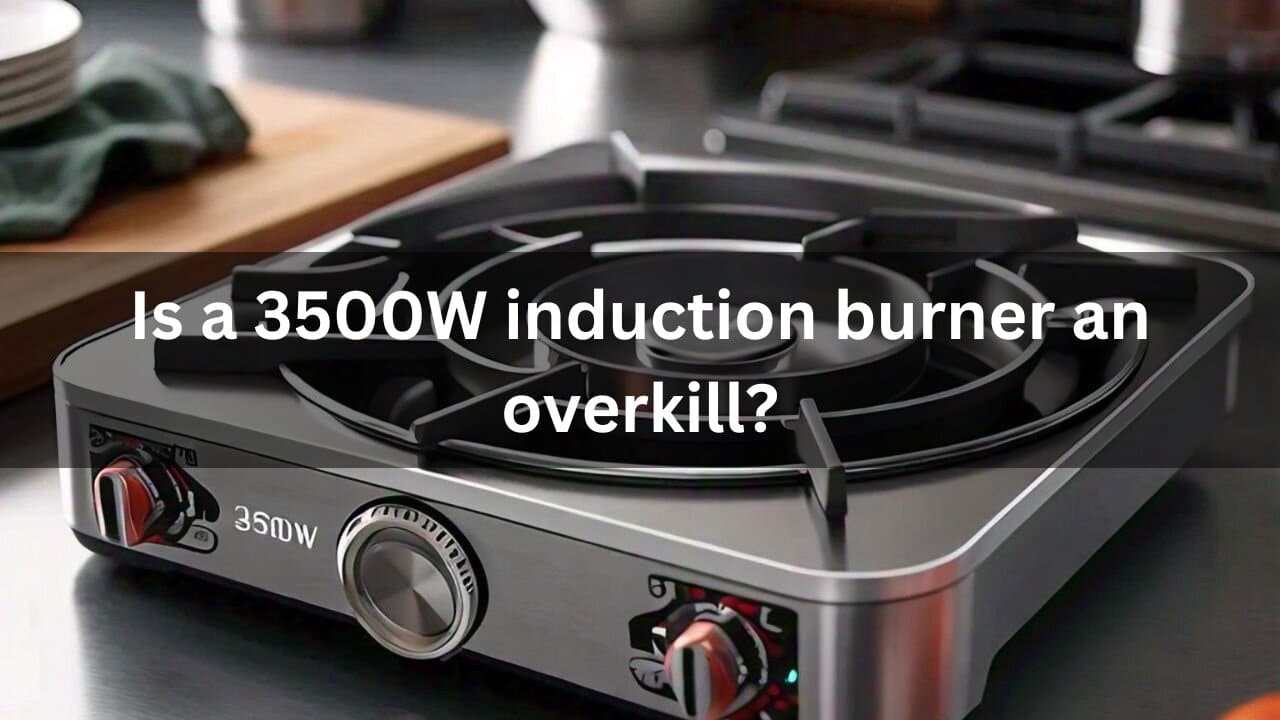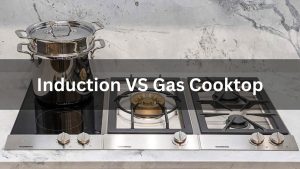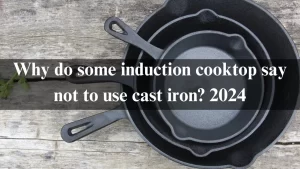Imagine standing in your kitchen, eyeing that sleek, high-powered induction burner you’ve been hearing so much about. You’ve heard the praises, the promises of lightning-fast heating, and the ability to handle any dish with ease. But then comes the doubt.
Is a 3500W induction burner more power than you need? Could it be too much for your everyday cooking? Or is it the secret weapon that will transform your culinary game? Stick with me as we dive into the heart of this question, exploring whether this powerhouse is truly overkill or just what your kitchen’s been missing.
Understanding Induction Burner Power Levels
Induction burner power levels refer to the amount of heat the burner can produce. Lower power levels are ideal for simmering or gently warming food, while higher power levels are used for boiling water quickly or searing meats. The power level you choose controls how fast and intense the heat is, allowing you to cook with precision.
Table of Contents
How Many Watts Is an Induction Stove Good?
Induction stoves typically range from 1,200 to 3,700 watts. The higher the watts, the faster your food will be cooked.
- 1,000 to 1,800 watts: These lower wattages are great for simmering, melting, or cooking delicate foods that require gentle heat. For a home kitchen, an induction stove in this range is often ideal.
- 1,800 to 2,500 watts: This mid-range power is perfect for everyday cooking, like sautéing vegetables or boiling pasta.
- 2,500 to 3,700 watts: Higher wattages are used for fast cooking tasks like searing steaks, quickly boiling large pots of water, or stir-frying.
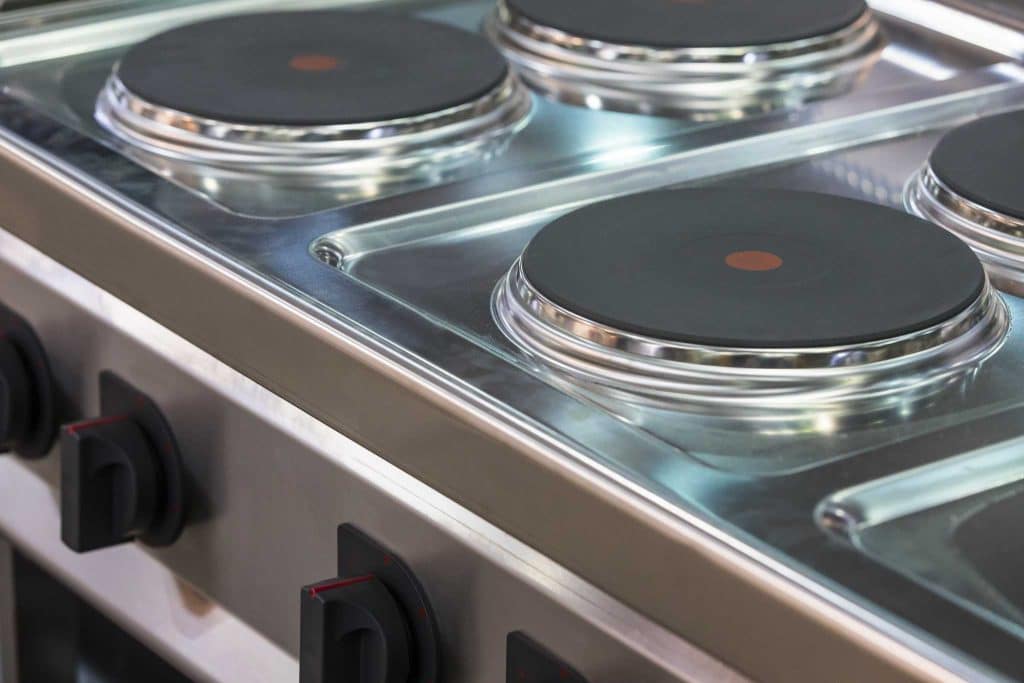
For most home kitchens, an induction stove with a wattage between 1,000 and 2,000 watts is usually the best choice.
Which Watt Is Best for Induction?
The best wattage for an induction stove depends on your cooking tasks and needs:
- 1,000 to 1,800 watts: Ideal for slow cooking, simmering, melting chocolate, or other tasks that require gentle heat. This range is perfect for those who cook delicate dishes or want more control over lower temperatures.
- 1,800 to 2,500 watts: Great for everyday cooking like boiling, sautéing, and frying. If you cook a variety of dishes and need versatility, this wattage range is a good fit.
- 2,500 to 3,700 watts: Best for high-heat tasks like searing, stir-frying, or quickly boiling large amounts of water. This higher wattage is ideal for those who need fast, intense heat.
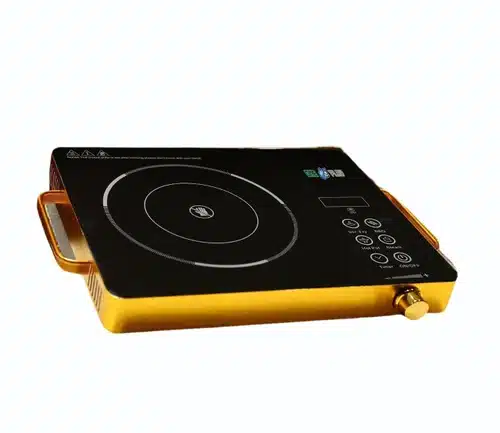
For most home kitchens, a stove in the 1,000 to 2,000-watt range is usually the best choice, providing a balance of power and efficiency for everyday cooking needs.
Is 1200W Induction Good?
A 1200W induction burner is good for everyday cooking tasks that require gentle to moderate heat. It’s perfect for simmering sauces, cooking rice, melting butter, and even slow-cooking dishes. While it may not be the fastest for boiling water or searing meats, it offers precise temperature control, making it suitable for many common cooking needs in the kitchen.
The higher the wattage of an induction burner, the faster your food will be cooked. For a home kitchen, the best induction burner typically falls between 1000 to 2000 watts. This range provides a balance of power and efficiency, making it ideal for most cooking tasks.
Evaluating 3500W Induction Burners
A 3500W induction burner is a high-powered cooking tool. It’s incredibly fast and can handle tasks like boiling large pots of water or searing meats with ease. This level of power is more than most home kitchens need for everyday cooking, making it better suited for commercial kitchens or serious home cooks who need quick, intense heat. While it might be overkill for basic cooking, it’s perfect if you regularly cook large meals or need top-speed cooking performance.
How Many Units Is 3500 Watts?
A 3500W induction burner uses 3.5 kilowatts of electricity per hour when running at full power. 1 unit on your meter equates to 1000W of power consumed in one hour, or 1 kilowatt-hour (kWh). So if you’re drawing 3500W in one hour, it would come to 3.5 units or 3.5 kWh. If you use the burner for 2 hours, it would consume 7 units of electricity (3.5 kWh x 2 hours). The total units used will depend on how long and how often you run the burner.
How Many kVA Is 3500W?
To convert watts (W) to kilovolt-amperes (kVA), you need to know the power factor (PF), which is a measure of how effectively the power is being used. For induction burners, the power factor is usually around 0.9.
So, a 3500W induction burner would require approximately 16.9 kVA when the power factor is 0.9. This tells you how much apparent power is needed to handle the real power being used by the burner.
Scenarios Where 3500W Is Useful
A 3500W burner is particularly useful in the following scenarios:
- Large Meals: When cooking for a large family or gathering, the high power allows you to boil large pots of water quickly or cook multiple dishes simultaneously.
- Commercial Kitchens: In restaurants or food service environments, the fast heating capabilities of a 3500W burner help speed up meal preparation and handle high-demand cooking.
- Quick Searing: For dishes that require intense heat, like searing steaks or stir-frying, the 3500W power ensures you achieve the high temperatures needed for perfect results.
- Boiling Large Quantities: If you need to boil large amounts of water or make big batches of soups or stews, the 3500W burner can handle the job efficiently and quickly.
- High-Efficiency Cooking: When you need to cook multiple dishes in a short amount of time, the higher wattage helps you complete tasks faster without compromising quality.
In these situations, the full power of a 3500W burner provides the speed and intensity needed for optimal cooking performance.
When a 3500W Burner Might Be Overkill
A 3500W burner might be overkill in the following scenarios:
- Small Households: For everyday cooking in a small household, a lower-wattage burner is often sufficient. Using a 3500W burner for small meals can lead to unnecessary energy use and higher utility bills.
- Delicate Cooking: When cooking delicate dishes that require gentle heat, such as melting chocolate or simmering sauces, the intense power of a 3500W burner may be excessive, making it difficult to control the temperature accurately.
- Occasional Use: If you don’t cook large quantities or perform high-heat tasks frequently, a 3500W burner may not be necessary. Lower-wattage burners can handle most typical cooking needs without wasting energy.
- Energy Efficiency: Higher wattage can lead to higher energy consumption. If you’re looking to save on energy costs, using a burner with a lower wattage might be more economical for regular cooking.
- Compact Kitchens: In smaller or less equipped kitchens, a 3500W burner might take up valuable space and add to the electrical load unnecessarily.
In these cases, a lower-wattage burner can be more practical and efficient, providing sufficient power without the drawbacks of excess energy consumption and high operating costs.
Balancing Power and Efficiency
Balancing power and efficiency involves choosing an induction burner with the right wattage for your needs. If you mainly cook small meals or delicate dishes, a lower-wattage burner (1,000 to 2,000 watts) is often more efficient and cost-effective. For faster cooking or larger meals, a mid-range burner (1,800 to 2,500 watts) provides a good balance between speed and energy use. Opt for a burner with adjustable power settings to match different cooking tasks and avoid unnecessary energy consumption.
Do Induction Burners Use a Lot of Electricity?
Induction burners can use a lot of electricity, especially those with higher wattages. For instance, a 3500W induction burner uses 3.5 kilowatts per hour when operating at full power. However, they are generally more energy-efficient compared to traditional electric stoves. The measured parameters show that the power consumption of an induction cooktop is about 0.35 kW/h, which is nearly 5 times less than what electric stoves consume. Additionally, many induction cooktops have features that display the amount of power used, helping you monitor and manage energy consumption more effectively.
Are Induction Burners Worth It?
Whether a 3500W induction burner is worth it depends on your specific cooking needs and preferences. If you frequently cook large meals, need quick, high-heat cooking, or work in a commercial kitchen, the high power can be a significant advantage, offering speed and efficiency. However, for everyday home use, where most cooking tasks can be handled with lower wattage, the 3500W burner may have more power than necessary, leading to higher energy consumption and cost. For most home kitchens, a mid-range burner (1,800 to 2,500 watts) often provides a better balance of performance and efficiency. Ultimately, the decision should be based on your cooking habits and whether the added power justifies the potential extra cost and energy use.
Conclusion
A 3500W induction burner is a powerful tool, but it may be overkill for most home kitchens. While its high wattage offers exceptional speed and performance for demanding tasks like searing steaks or boiling large pots of water, it can also lead to higher energy consumption and unnecessary costs for everyday cooking.
The ideal induction burner wattage depends on your cooking habits and needs. For small households or those who primarily cook delicate dishes, a lower-wattage burner (1,000 to 2,000 watts) is often sufficient and more energy-efficient. If you frequently cook large meals or need quick, intense heat, a mid-range burner (1,800 to 2,500 watts) provides a good balance between power and efficiency.
Related Articles:
What Is The Biggest Problem With Induction Cooktops? 2024
Is An Induction Cooktop Supposed To Heat With Pauses?
Why Do Induction Stoves Work Poorly In Low-Power Settings? Info 2024
Why Is My Induction Stove Giving An Electric Shock? Latest Info 2024
Do Induction Cooktops Get Hot Enough To Stir Fry Effectively?
FAQs
How many watts of induction is good for a home?
When it comes to induction cooking at home, wattage plays a crucial role. Generally, 1800 watts is considered the sweet spot for most households. This level of power offers a great balance between efficiency and capability.
If you’re an occasional cook or enjoy simple meals, you might get by with a lower wattage like 1200 watts. It can handle basic tasks but may struggle with larger pots or complex recipes.
For those who like to experience in the kitchen or often prepare large meals, such as 2000 watts or more choose high watts. A powerful burner gets heated quickly and significantly reduces cooking time.
Your choice depends on your cooking style and needs. Assess how often you cook and what types of dishes you enjoy making to find that perfect fit for your kitchen!
Which induction is better, 1200 watt or 1800 watt?
When deciding between a 1200-watt and an 1800-watt induction cooktop, consider your cooking habits.
A 1200-watt model is sufficient for basic tasks like simmering sauces or preparing simple meals. It’s energy-efficient and perfect for smaller kitchens. If you rarely cook large quantities, this option might serve you well.
On the other hand, an 1800-watt induction burner offers more versatility. It heats up faster and can handle larger pots with ease. This makes it ideal for sautéing vegetables or boiling pasta without delay.
Think about the types of dishes you often prepare. If you’re passionate about cooking elaborate meals, the extra power from an 1800-watt unit could be worth it. Both options have their merits; your choice should align with your culinary needs and kitchen setup.
What is the difference between a 1200W and a 2000W induction cooktop?
When comparing a 1200W and a 2000W induction cooktop, the most noticeable difference is heating efficiency. A 2000W model heats up faster, allowing you to boil water or sear meat in less time.
The power output also affects cooking versatility. With additional watts, you can use larger pots and pans without losing heat intensity. This means better performance for high-heat tasks like stir-frying.
Another consideration is energy consumption. While a higher wattage might seem alarming, it often translates into quicker meal preparation. In many cases, this could result in lower overall energy usage over time.
However, if your cooking requirements are basic – such as boiling or warming – 1200W coke top can be enough. It is compact and generally more budget-friendly, while still providing good results for everyday meals.
Will a 2000W inverter run a 2000W induction cooktop?
Running a 2000W induction cooktop with a 2000W inverter sounds straightforward, but it has its nuances. Induction cooktops draw power in bursts, especially during startup. This can lead to higher initial wattage requirements that exceed your inverter’s capacity.
If your inverter is strictly rated at 2000 watts, it might struggle under peak load conditions. It’s essential to consider the continuous and surge ratings of your inverter. Inverters often have a surge rating that allows them to handle brief spikes in power.
Moreover, efficiency plays a role too. An inefficient system may not provide enough consistent output for the cooktop’s demands. For optimal performance and safety, it’s wise to select an inverter with a higher wattage capacity than just the bare minimum required by the induction unit itself.
How many watts is good for an induction stove?
When it comes to choosing the right wattage for an induction stove, several factors come into play. The optimal wattage largely depends on your cooking habits and kitchen size. For most home cooks, a range of 1500W to 2000W is sufficient for daily meal preparation. This power level allows quick boiling and efficient frying while maintaining energy efficiency.
If you frequently host dinner parties or love cooking large meals, you might find that stepping up to a higher-wattage model suits your needs better. A 3500W induction burner can provide rapid heating capabilities that are unmatched in standard models. However, consider whether that extra power will truly benefit your culinary endeavours or if it’s simply overkill for everyday use.
Assessing how much cooking you do and the types of dishes you typically prepare will help guide your decision on the best induction stove wattage for your home. Finding the right balance between performance and practicality ensures you’ll enjoy a seamless cooking experience without unnecessary excess.

